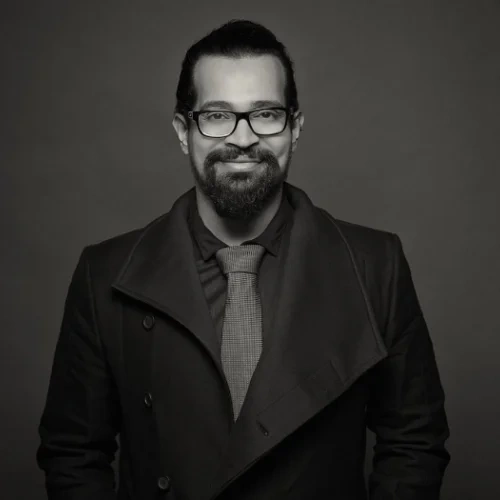The concept of mindfulness and meditation has gained rampant popularity recently. With the hustle and bustle of everyday life, it's easy to feel overwhelmed and stressed out. Mindfulness meditation instills a sense of calm and clarity amidst the chaos circling our minds.
As Jon Kabat-Zinn says, “Mindfulness is awareness that arises through paying attention, on purpose, in the present moment, non-judgmentally.”
But the most common question is, “What is Mindfulness and how to practice it?” As a trained mindfulness practitioner, my objective with this article is to explain that in detail.
So, if you are intrigued by mindfulness and want to practice it in real-time, I have lined up all the answers for you in this article.
What is Mindfulness Meditation, and What are its Benefits?
Mindfulness meditation involves paying attention to your thoughts and sensations in the present moment without judgment. It involves paying close attention to your ideas, focusing on your breath and the associated bodily functions.
The benefits of mindfulness and mindful living are numerous and backed by scientific evidence. Some of the most important ones include:
- Reducing stress and anxiety
- Improving focus and concentration
- Enhancing emotional regulation
- Boosting immunity
- Increasing self-awareness and empathy
- Reducing symptoms of depression
- Improving sleep quality
Fortunately, there are many ways to incorporate mindfulness meditation into your daily life. You can try guided meditation using apps like the Mindfulness Practitioner app. You can also try self-paced mindfulness meditation, or you can practice simple breathing exercises too.
It will take some time for you to develop a regular meditation habit. However, the benefits you reap are well worth the initial days of struggle. As Sharon Salzberg says, Mindfulness isn't difficult; we just need to remember to do it.”
Ways to Practice Mindfulness Meditation
Now that you clearly understand the importance of mindfulness, let me walk you through the 5-step process I use with my clients. Practicing mindfulness meditation will become a walk in the park once you master these five consecutive steps.
1. Find a comfortable and quiet place
There’s no alternative to this. You must eliminate every last distraction around you to focus on the present.
So, start by finding a quiet, comfortable space where you won’t be interrupted. You can sit on a cushion or a chair, whatever feels comfortable. Sitting with a straight back is also important to maintain good posture.
You can choose a corner in the room or a designated meditation area in your house. The key is to choose a place where you feel relaxed and can easily focus your attention.
Once you've found your quiet and comfortable space, you're ready to begin your mindfulness meditation practice. Start by taking a few deep breaths and bringing your attention to your breath. Allow yourself to relax and let go of any tension or stress you may be feeling.
2. Focus on your breath
The next step is the most fundamental element in mindfulness meditation – directing your focus on your breath.
By directing your attention to the sensation of your breath, you bring yourself into the present moment and help quiet your mind.
To begin, find your comfortable spot and either lie down or stay seated with a straight posture. Next, take deep breaths and allow your breath to return to a natural rhythm. As you keep breathing, direct your focus to the sensation of breathing as you inhale and exhale.
Pay attention to the flaring of your nostrils, the rise and fall of your chest, and the contraction of your belly; the air enters and leaves your system. To keep your focus in one place, count your breaths. This prevents your mind from wandering and straying.
3. Notice your thoughts
As you breathe in and out, you will realize that your mind begins to wander, giving rise to an unnecessary stream of thoughts.
It's important to remember that this is a natural and normal part of the practice. Don’t let that discourage you from trying mindfulness meditation. Instead of being stringent or hard on yourself, treat these thoughts as passing clouds in the sky.
Observe these thoughts but don’t hold onto them. Let these thoughts arise in your mind, and let your mind acknowledge these thoughts without judgment. Once it does, let the thoughts pass as you gradually bring your attention back to your breath.
Consistent practice can cultivate greater awareness and mindfulness in your daily life.
4. Coming back to your breath
"Coming back to your breath" is a central aspect of mindfulness meditation. When you are meditating, and you feel your mind wandering to the upcoming presentation that you have to give at work, feeling frustrated is very common.
Kindly focus on the fact that mindfulness isn’t about eliminating your thoughts or achieving a state of perfect concentration. It is the art of being present while acknowledging and co-existing with the wandering and passing thoughts in your mind.
It's about cultivating awareness and acceptance of whatever arises in the present moment. One easy way to bring your attention back to your breath is by using an anchor like “breathe in, breathe out.”
5. Practice regularly
Mindfulness meditation’s benefits and impacts rely on how consistent you are. You don’t have to spend an hour each day. Sometimes, even 10 minutes is considered enough.
Your aim is to establish a routine where you spare a few minutes of the day every day. Some people find it helpful to meditate first thing in the morning, while others prefer to meditate at night before bed – the choice is yours.
Identify the barriers if you find it difficult to set up a routine. What is stopping you from cultivating this habit? Once you identify those limitations, acknowledge them and work on eliminating them.
Remember, mindfulness meditation is a practice that takes time and patience to develop.


-min64d383720d2b48.53644657.webp)



Comments